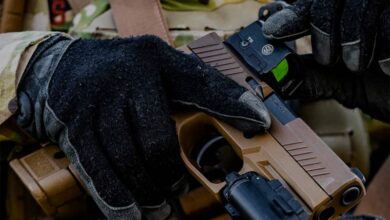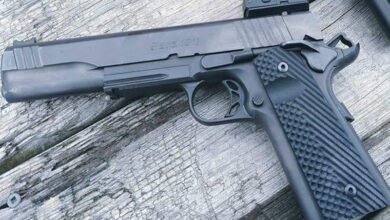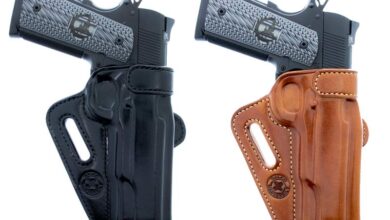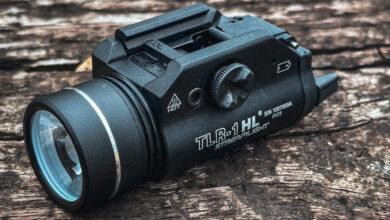Arizona Ranger by Cimarron: A Review
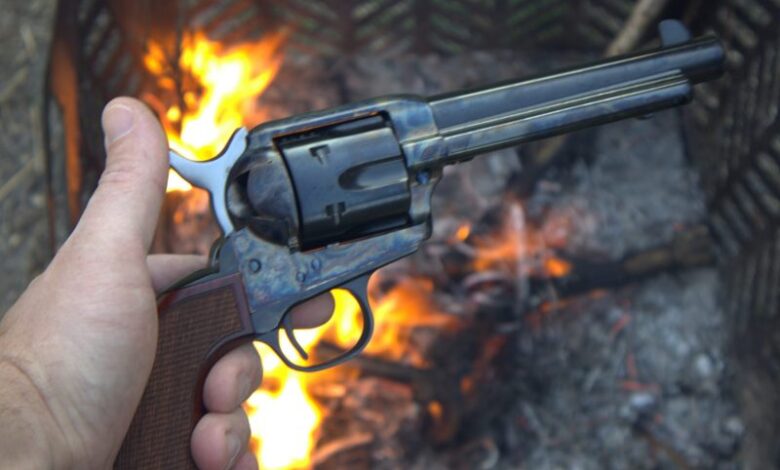
While Western films and television kept the guns of the West in our imagination, the rubber truly hit the road with the beginnings of cowboy action shooting in the 1980s. From there, the demand for shotguns, derringers, lever-action rifles, and single-action revolvers bloomed. Old guns and old rounds returned from the dead alongside new twists. Lawmen, outlaws, and all archetypes of the West typically carried and shot mechanically stock revolvers with black powder ammunition.
Today’s competition shooting is a different animal. Smokeless ammo of different power levels dominates, and the wheel guns on the line are often slicked up for speed. Tuning a revolver is generally a labor of love on a stock revolver. Cimarron Firearms has a long line of tuned factory models, including the new Arizona Ranger. The Arizona Ranger represents a competition-ready option for those so inclined. As a shooter, it might just be the ticket for those of us who are curious about single-action revolvers.
The Cimarron Arizona Ranger: Quirks and Features
Mike Harvey of Cimarron Firearms has long collaborated with Uberti of Italy on reverse-engineering original firearms into screw-for-screw replicas. In addition, Uberti produces runs of revolvers specific to Cimarron’s requirements. The Arizona Ranger is geared toward cowboy action shooters. It is mechanically identical to the ubiquitous Model P Colt Single Action. Instead of smooth walnut grips and a narrow set of iron sights, the Arizona Ranger comes with slim checkered stocks and a squared rear notch sight paired with a wide front blade. For the trouble, you get a firmer hold and sights that are easier to pick up in a hurry.
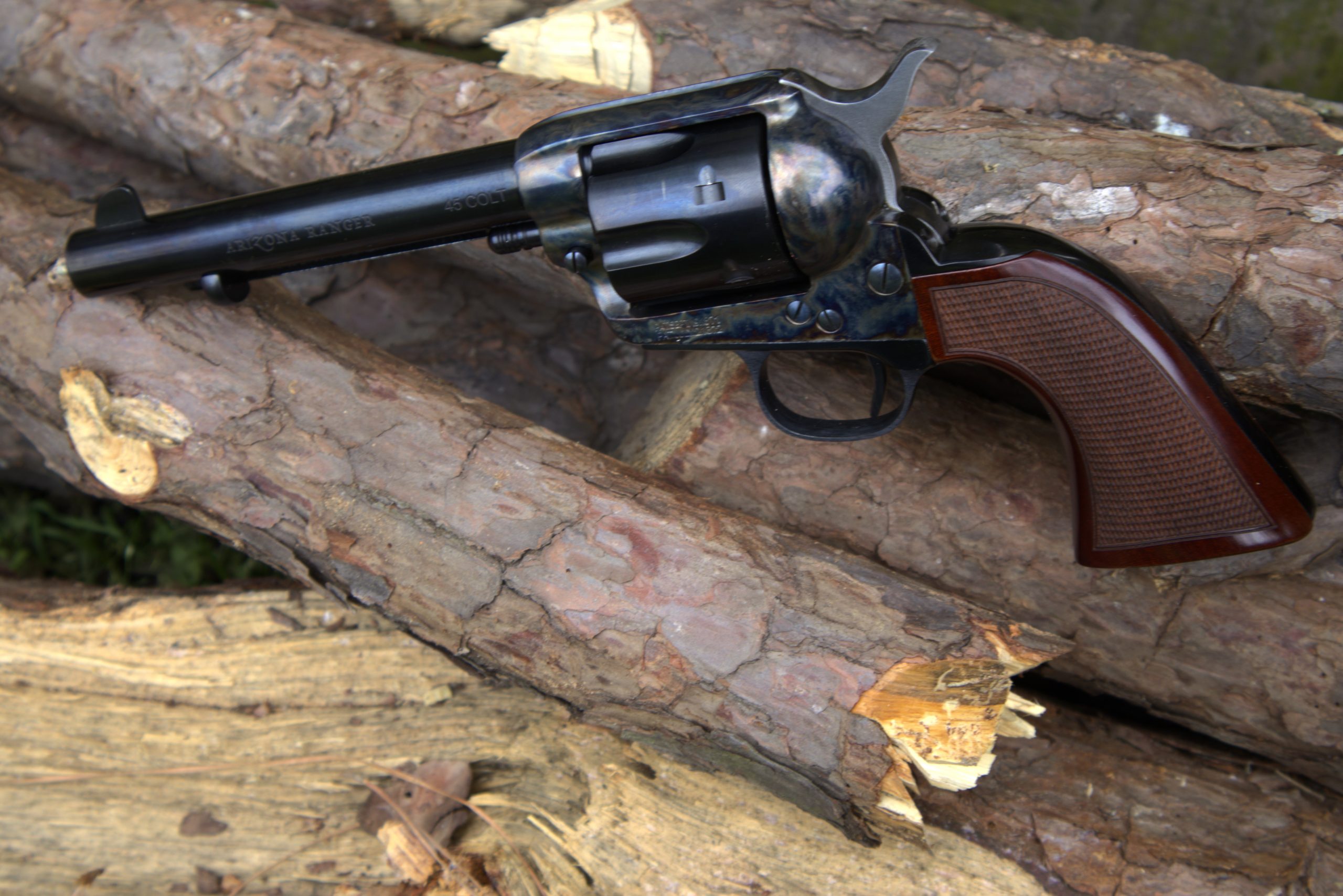
Action
In addition, Cimarron’s gunsmiths have given the Arizona Ranger a full-action job. They upgraded the hammer, trigger, and bolt springs and honed the internal parts for minimal friction, as evidenced by the effortless trigger pull. On my Lyman trigger scale, the Arizona Ranger’s trigger breaks at only 1.1 pounds with no discernible pre-travel.
Aside from these upgrades, the Arizona Ranger is classic Colt-esque. It uses a pre-war (as in pre-World War II) frame that utilizes a spring-loaded thumbscrew to retain the cylinder pin. It also features the latter-style crescent button ejector rod. The revolver features a color-casehardened frame, blued steel grip frame, barrel, and six-shot fluted cylinder.
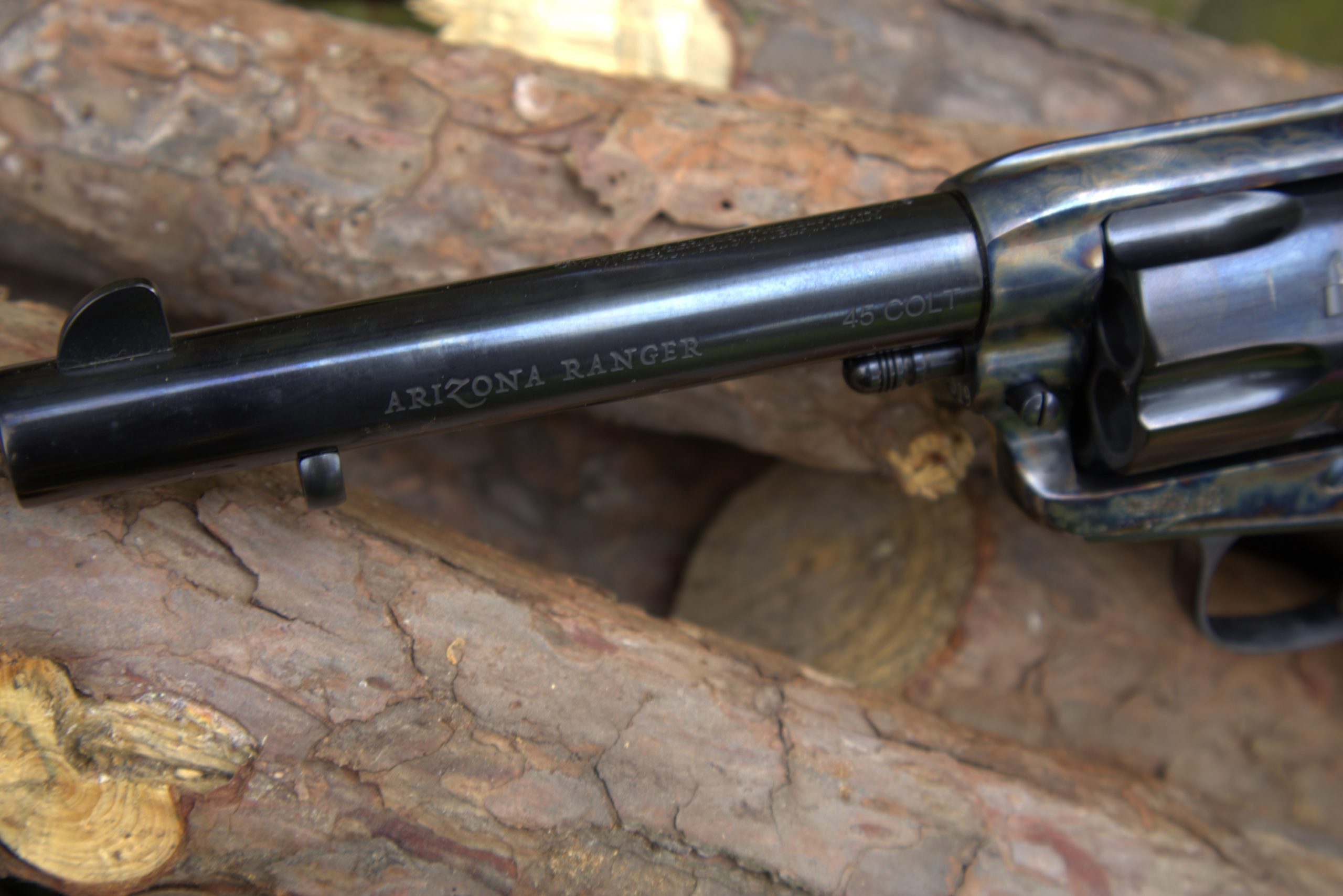
It is a single-action revolver, which requires the hammer to be thumbed back for every shot. Like any old Colt, the hammer must be brought to half-cock to free the cylinder for loading and unloading. This is accomplished with the loading gate and ejector rod mounted on the right side.
Safety
Unlike some Colt clones and revolvers like the Ruger Vaquero, the Arizona Ranger has a fixed firing pin and no safeties aside from the four-notch hammer. Some replicas eliminate the original safety notch used on early Colt revolvers, but the Arizona Ranger has retained it. When the hammer is drawn to the rear, the first audible click is the hammer entering the safety notch. The second click is the half-cock position that you would use to load and unload. The third click is heard when the cylinder stops and locks the cylinder in place. The fourth is full cock. The safety notch itself should not be trusted as it is relatively shallow, like on the old Colts. The Ranger retains the same function and distinctive sound of a Colt SAA.
Caliber
The Arizona Ranger is available in the historically accurate .45 Colt cartridge or the CAS-friendly .357 Magnum. It is available with either a 4.75-inch or 5.5-inch barrel. I admit to being a single-action revolver fan. My favorite handgun in my collection is my Ruger Single Six. I have long been a fan of Cimarron’s cap and ball revolvers. While the .357 Magnum/.38 Special version of the Arizona Ranger makes the most sense for most of us thanks to the lower cost of ammunition and overall ammo versatility, I had to go all the way and spring for the 5.5-inch model in .45 Colt for my first centerfire single action.
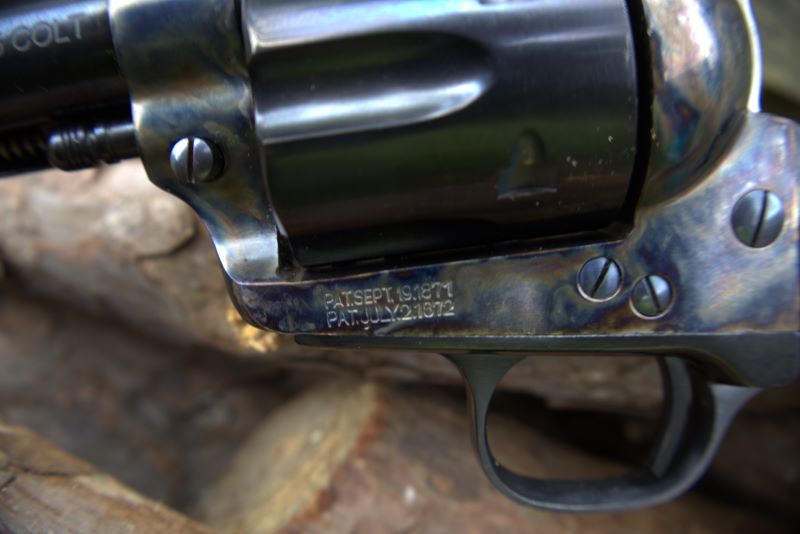
Quick Specs:
- Model: Arizona Ranger
- Caliber: .45 Colt
- Capacity: 6 Rounds
- Barrel Length: 5 1/2 inches
- Overall Length: 11 1/4 inches
- Weight: 39 oz. loaded
The Cimarron Arizona Ranger on the Range
Some of my compatriots at the MagLife like to test gear in the context of competition and rigorous training. As much as I would like to say I vetted the Cimarron Arizona Ranger on the Cowboy Action Shooting circuit, I am no competitive shooter. I only recently learned that cowboy action matches are held in my local area. But I did put a few hundred rounds of ammunition through the Arizona Ranger throughout several range sessions. I did have the fortune of shooting the Arizona Ranger alongside a stock Cimarron US Cavalry model. With that said, I feel I can safely glean some insights that might be useful for both competitive shooters and single-action curious alike.
Although loading and unloading takes more steps than a modern pistol, actually shooting a single-action revolver is like pistol shooting in easy mode. I could best describe the Arizona Ranger as pistol shooting in easier mode. I took the US Cavalry model in .45 Colt along with the Arizona Ranger to the range with a hundred rounds of Winchester and Hornady 255 grain lead cowboy loads to give them an initial range workout.
Loading
I started by setting a paper target out at ten yards and shooting five-round groups between the two handguns. Loading the Arizona Ranger was a mix of straightforward and unease. Like any single-action Colt clone, you have to draw the hammer back to half-cock and open the loading gate to expose the cylinder. The lighter hammer throw of the Arizona Ranger is meant to allow the shooter to cock and shoot fast, but the audible and mechanical clicks that were easily understood when loading a stock revolver barely registered in my head. A sweep of the thumb often gets me past the half-cock position, and I had to remind myself to stop halfway. That hammer is easy to cock!
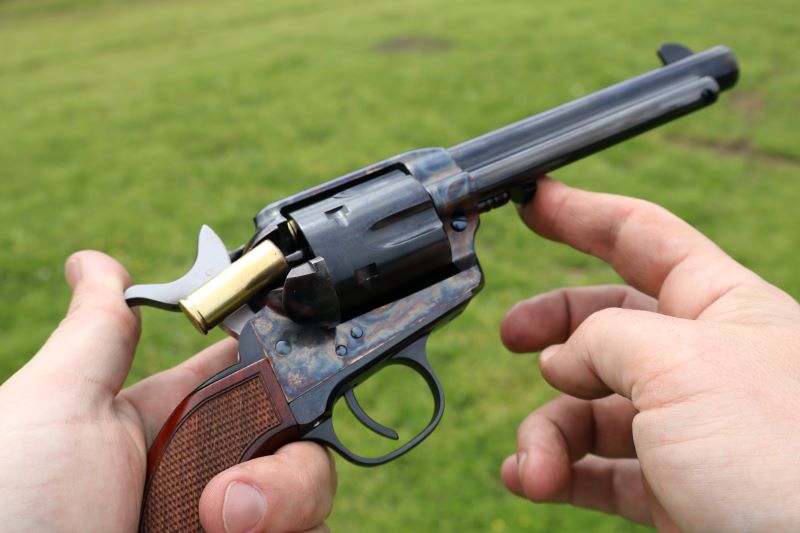
Once I figured out how best to manipulate the hammer, everything ran smoothly. With the gate open, it was easy to drop those big .45 caliber shells into the cavernous chambers. On the range, you could load six rounds and get away with it. Throughout my time with the Arizona Ranger, I loaded five and kept the hammer down on an empty chamber, so it was completely safe to carry. I did this by loading one round, skipping a chamber, then loading four. From there, I bring the hammer back and down on the dead chamber. From the back, it is easy to tell if you make a mistake. You can see the primer of a live round in the firing pin channel if you spin the cylinder too far.

Trigger
Like drawing the hammer to half-cock, I had to get used to the trigger pull weight as it only took a light squeeze to set it off. But as long as you are on target, having the handgun discharge as a surprise is a good thing. I could reliably stack five rounds into a group of just over one inch at ten yards. The square-notch and post sights of the Arizona Ranger were also easier to see, so I could put those five rounds downrange just a hair faster.
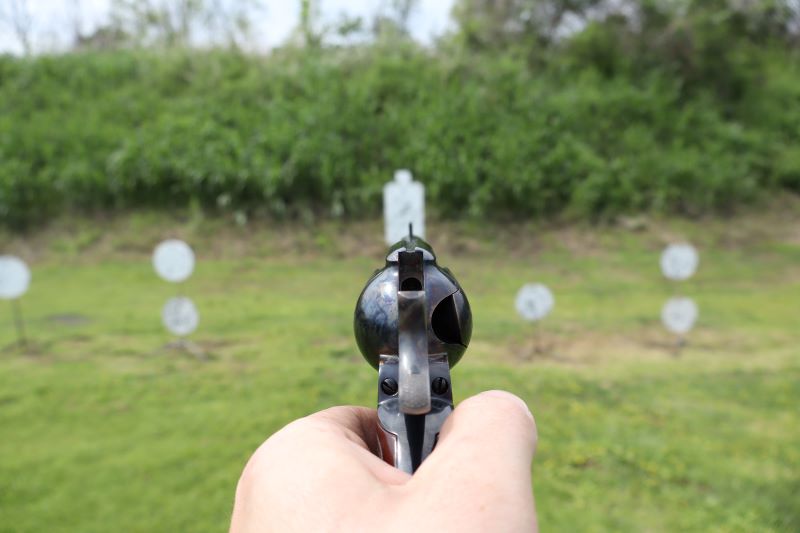
Overall Performance
The story repeated itself on other trips with different types of ammunition ranging from 255-grain black powder loads to Hornady Critical Defense 185-grain FTX defensive ammunition. All ammunition grouped well, but the Hornady 255-grain cowboy load proved hard to beat between both revolvers. I stretched the distance on various steel targets ranging from 8-inch plates to 1/2 torsos out to 35 yards. That light trigger combined with easy-to-alight sights and the overall perfect balance of this 5.5-inch barreled revolver made it easy to get hits, even with one paw.
All of these features combined to offer forgiveness before I could shake or make some sort of mistake that might throw my shot wild. The finer sights and heavier trigger pull gave me just a few fewer hits with the Cavalry model. While both revolvers produced excellent accuracy, the Arizona Ranger’s performance had me thinking of it in the context of roles outside the matches. The .45 Colt, when shot this well, would make excellent whitetail medicine at reasonable ranges.
Reliability
Single-action revolvers are more mechanically straightforward than double-action versions and tend to be very reliable without a care about what you put into them. But when you start messing with the factory springs of any given firearm, reliably tends to go with it. I am no stranger to tinkering with aftermarket springs to get a better trigger pull, but I had never seen a trigger pull or hammer pull so light and effortless. One had to wonder if the hammer would hit the rounds with enough force to set them off. I am surprised to report that out of all the rounds I fired, I had no failures to fire, cycle, or eject.
Initially, I dinged the Arizona Ranger for its effortlessness of thumbing the hammer past half-cock. With some repetition getting to half-cock, I never had an issue in the field. Furthermore, the full-cock notch absolutely drops anchor when the hammer is cocked. Even when shooting fast with a two-handed grip, there was never any fear of me slipping off of full-cock unless my finger was actually on the trigger.
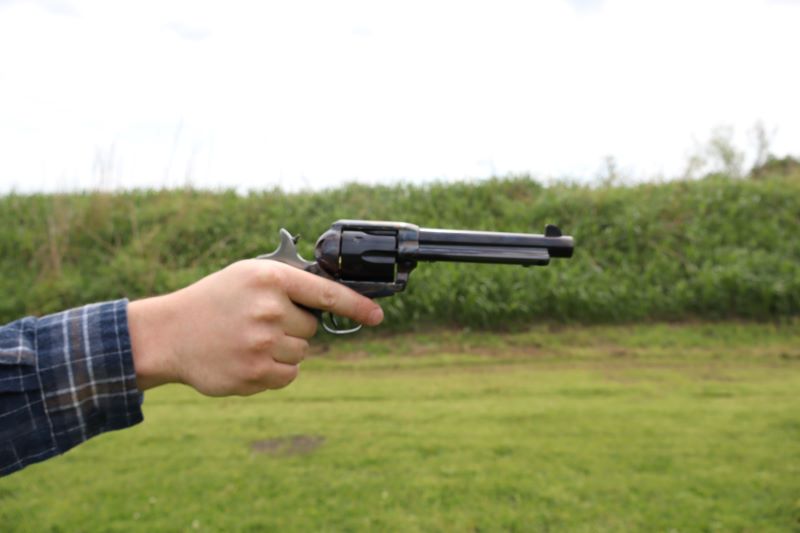
Shooting Characteristics
With all the loads I tried, it had brick recoil, but the checkered grip kept my hands in place at all times. The .45 Colt cowboy loads have roughly the energy of .45 ACP, which is nothing to sneeze at. But those big, slow-moving rounds have a way of recoiling that isn’t so sharp like a Magnum round.
My black powder loads closely replicated the original load adopted by the Army in 1873. It boasted 40 grains of black powder with a 255-grain bullet crammed on top. Recoil was a little more prohibitive, and the sight smoky, but I never felt I was going to lose control. I was also able to get through a fifty-round string of fire with those black powder rounds without having to break the gun down for cleaning. It never grew sticky. Even so, the use of a pre-war frame allows you to take out the cylinder without any tools for a quick clean.
The US Cavalry Model, as it was adopted in 1873, wears a 7.5-inch barrel. That gives you a bit more power and, for the nineteenth-century shooter, a greater effective range. The Cimarron model struck me as steadier but muzzle-heavy. For a prolonged match, I could see how that would get fatiguing. The 5.5-inch Arizona Ranger is perfectly balanced and quick out of the holster while still giving you enough sight radius to work with. In any event, the block sights on the Ranger made them easy to see, and the revolver shot to the point of aim.
The Cimarron Arizona Ranger: A Single-Action for All?
Although I am not a cowboy action shooter or a particularly astute fan of the Western genre, accuracy and simplicity are what draw me to single-action revolvers. As a hunting and hiking sidearm, I pack around a Ruger Single Six. It is heavy and has low capacity but is well balanced, and it has excellent sights that allow me to get a shot off quickly and accurately. The Arizona Ranger is ahead of a stock single action and represents a good buy for the new competitor. Some old hands will probably find things to improve upon when it is put to the clock. Despite what some say about competition guns having little utility in real-life shooting, I began to think of the Arizona Ranger more along the lines of how I use my Single Six.
It is perfectly balanced with just enough weight to avoid being onerous. With its hammer and trigger pull, it’s easy to get that first shot off fast. Although the sights are fixed, they hit where I put them and are big enough to get a flash-sight picture. Naturally, the Ranger is going to be of a more capable caliber for bigger tasks. Although a single-action revolver is not going to be for everyone, the Cimarron Arizona Ranger just might be the best everyman pistol of its class.
The post Arizona Ranger by Cimarron: A Review appeared first on The Mag Life.
Read the full article here


